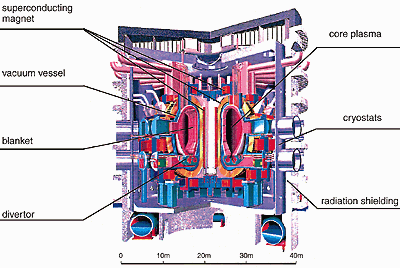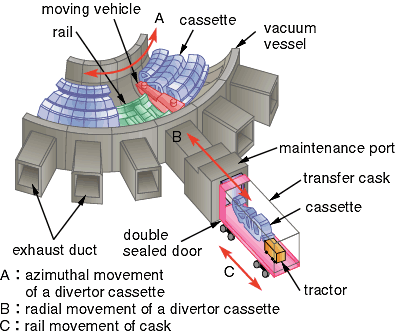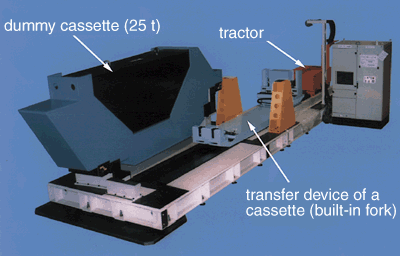| Lots of neutrons are produced in a nuclear fusion reactor and are
converted to thermal output. On the other hand, many plasma particles
enter the divertors as steady state loss from the reactor core plasma.
The divertor plates should be such that their maintenance is easy, (that
is, repair and/or exchange of the plates), because the divertor plates
suffer serious damage from plasma particles. The material exposed to
neutrons emits radiation by neutron activation. Therefore, remote handling
techniques inside a shielded area are needed. A cut away view of ITER
is shown in Fig. 2-16, where the divertor structure is shown at the
lower side of the vacuum vessel. A detailed birds-eye view of the divertor
structure is shown in Fig. 2-17. One divertor cassette unit weights
25 t. The setting accuracy of each unit should be within 2 mm to avoid
local heat concentration. The divertor unit must be transported outside
the vacuum vessel, moving on a rail. The procedures should involve easy
handling, accuracy of positioning, adjustment for expansion and contraction
by heat, and remote handling characteristics. In addition, the divertor
structures should withstand the electromagnetic forces caused by extraordinary
plasma quenching in reactor operations. A trial test piece of a transfer
system for the cassette, which was fabricated after many component tests,
is shown in Fig. 2-18. An overall test combined with a circumferential
transfer system is taking place at joint test facilities in the European
Union. |


